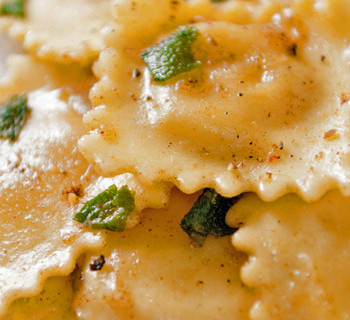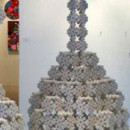There are two Christmas specialities that you will find in every Italian house at this time of year: Pandoro and / or Panettone.
These two traditional cakes were created in the north of Italy: Panettone in Lombardy and Pandoro in Veneto and there's a legend about their invention.
A cake at the court of "Ludovico il Moro"
Legend has it that a certain Toni, a boy at the service of Ludovico il Moro in Milan, in order to save lunch on Christmas Eve, replaced the cake burnt by the cook with an improvised dessert, mixing leavened bread with what he had available: dried fruit. The recipe conquered the court so much that the new dessert was replicated and called "Pan del Toni", hence "Panettone".
A tradition dated back to the Renaissance
Pandoro is a word formed by "Pan" (bread) and "Oro" (gold).
Some believe that Pandoro was invented in Venice during the Renaissance, an era of great wealth for the Ducal City, when it was common for desserts to be served covered with pure gold leaves.
Others believe it is the heir of the "Nadalin", a very simple dessert prepared just for Christmas in all Veronese homes.
And Verona is precisely the city where the production of Pandoro established itself during the nineteenth century. Here, in 1894, the pastry chef Domenico Melegatti, who takes inspiration from an ancient tradition, invented the current Pandoro.
Which one do you prefer?
Every year in Italy, there's a soft conflict between those who prefer Panettone and those who favor Pandoro. Even solid couples are divided on this alternative, family rivalries reopen, historical friendships are broken!
Looking at the stats Panettone won the war, but by a few percent.
Pandoro is definitely the most loved by children and young people, who don't like raisins and candied fruit.
The only Italian region where Pandoro is more appreciated than Panettone is Veneto, where it comes from.
Their popularity is so widespread all over the world that, while we Italians are used to consuming them only at the end of the year, in other countries they are considered a dessert suitable for all seasons.
Recipes
Both Pandoro and Panettone are composed of flour, butter and sugar. What distinguishes the two desserts are their rising times: longer in Panettone (up to 2-3 days), shorter in Pandoro (from 18 to 36 hours). In terms of calories, Pandoro surpasses Panettone, because it is richer in butter.
In any case, we suggest that you accompany a slice of Panettone or Pandoro with a glass of Prosecco (also typical of North-East Italy) or one of Spumante (Italian champagne).
How about you? Which one do you prefer?
Watch the video of the Scuola Leonardo da Vinci Milan and find out how an artisanal panettone is made:
More articles about Italian Christmas traditions:
Scuola Leonardo da Vinci
Learn Italian in Italy in Florence, Milan, Rome, Turin and Viareggio
Latest posts by Scuola Leonardo da Vinci (see all)
- Black Friday Offer - Your Italian Journey Starts Here! - November 24, 2025
- The 5 Roman Expressions and Gestures You Must Know - November 3, 2025
- October in Viareggio: learning Italian between autumnal sea and romantic nature - October 27, 2025









